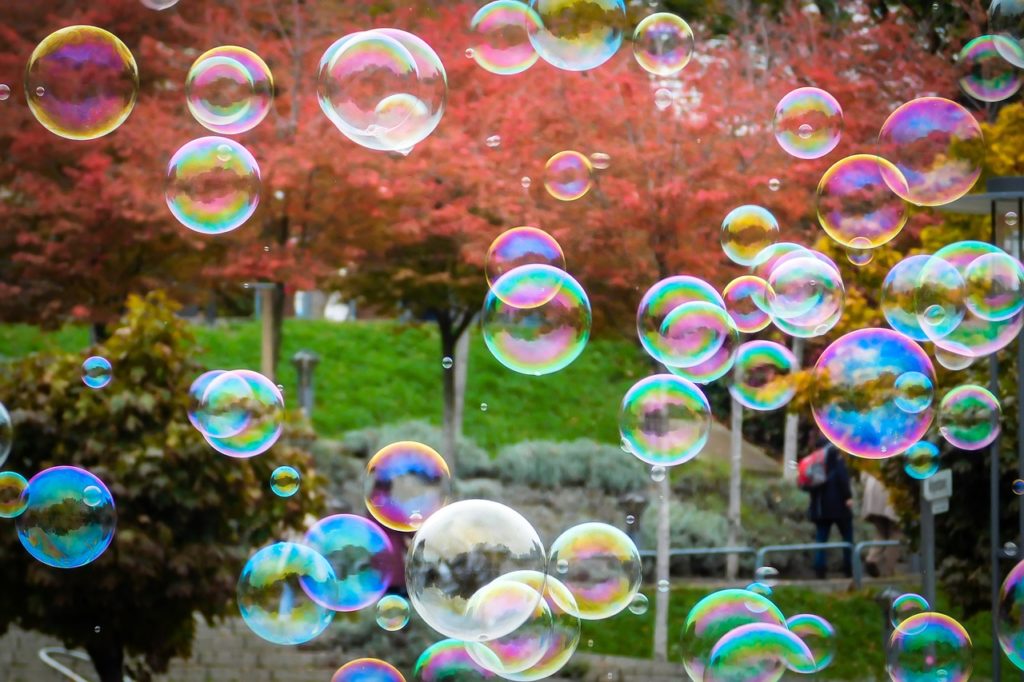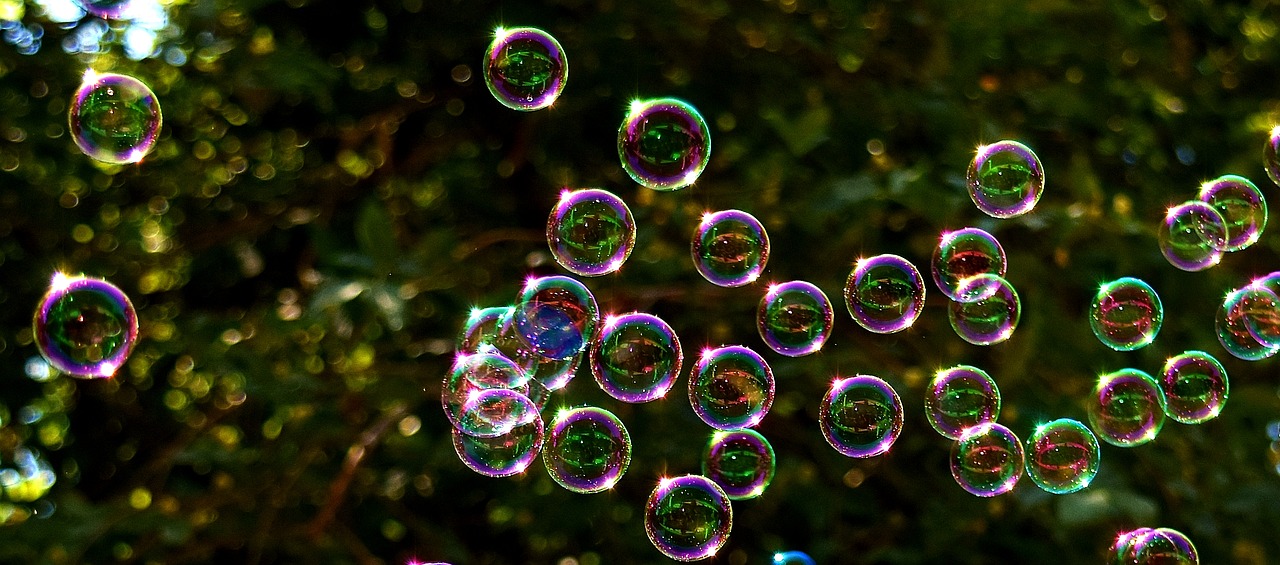Researchers in Japan have discovered a new way to address the effects of a global decline in the populations of bees and other wild pollinators: blowing bubbles.
In 2019 American beekeepers lost about 40 percent of all their honeybee colonies. The honeybee species Apis mellifera, traditionally the most abundant natural pollinator, now struggles under numerous environmental threats, including colony collapse, climate change, pesticides, parasites, and lack of proper nutrients needed for development. This problem directly strikes at the human food supply, since many common food plants, including almonds, avocadoes, blueberries, and tomatoes, are dependent on pollination.
A walk in the park leads to an “Aha!” moment

One method of artificial pollination recently developed by the School of Materials Science at the Japan Advanced Institute of Science and Technology involves lacing specially designed soap bubbles with pollen and delivering the bubbles to flowers and fruit plants either through blowing bubbles or drone. The materials chemist who led the project noted that it arose out of farmers’ expressions of annoyance with time-consuming methods of pollination by hand.
The initial toy drone the researchers created to deliver the pollen was only about 4 centimeters long. The research team adapted the drone by gluing horsehairs to its lower side, then washing the horsehairs in a sticky gel. They intended this design to function similarly to the way the bottom of a bee’s body does, as its hairs extract pollen from one plant and transfer it to another. Although this initial remote-controlled drone did deliver pollen to flowers, it proved hard to steer, and its propellers ended up damaging the flowers.
Then one day the lead researcher had a Newton-under-the-apple-tree burst of inspiration: As he walked in the park blowing bubbles with his son, it happened to occur to him that soap bubbles would be a far gentler delivery method than gelled horsehair. He also realized that additional advantages lie in the fact that bubbles are inexpensive, easily spread over a wide area, and offer a larger surface area.
Precision bubble-making
The first step involved creating the optimum bubble for the task, and the researchers eventually hit on the right chemical composition: a 0.4 percent concentration of a surfactant typically used in baby shampoos. The concentration of pollen also had to be exactly right, and they prepared one that would amount to about 2,000 grains of pollen for each bubble. They added a polymer to strengthen the bubble walls and turbo-charged their pollen solution with substances shown to improve germination.
The real-world test took place in a pear orchard. The team blew their specially designed bubbles at dozens of pear flowers. The follow-up study about two weeks later showed that almost all of these flowers later bore fruit. The researchers’ 95 percent success rate, in fact, was equal to that of hand pollination. Also, their method used only about 1/30,000th of the amount of pollen typically used to hand pollinate.
Constant improvement
Experts not affiliated with the Japan Advanced Institute found the project highly interesting, but they did caution that bees themselves remain the best and most efficient means of pollinating. If farmers begin to use artificial pollination methods, many might also begin to step up their use of pesticides, a practice that ends up damaging the bodies and habitats of wild pollinators.
One outside expert noted that although the bubble method could prove to be a better solution ecologically than pollination through non-native species, the chemical composition of the bubble solution itself could pose a threat to bees. The Japanese team has an answer for this: They are working on improvements that would use an organic, biodegradable bubble solution and have tried affixing a bubble gun to an improved drone shown to deliver pollen with 90 percent efficiency.
Pollination via other species, paintbrushes, or trucks
The bubble-delivery method is only one of several experimental processes scientists are developing to solve the pollination problem. Others include the use of other, non-honeybee species, such as the blue orchard bee, as pollinators. The blue orchard bee is not a pollinator, but farmers have already seen success after renting or buying thousands of them and introducing them to their crops.
Other alternative methods of pollination include hand painting pollen onto flowers and plants with a fine-bristled brush, a long-favored method among Japanese farmers, and mechanical pollination such as spraying enhanced pollen solutions via tractor or truck rig.

